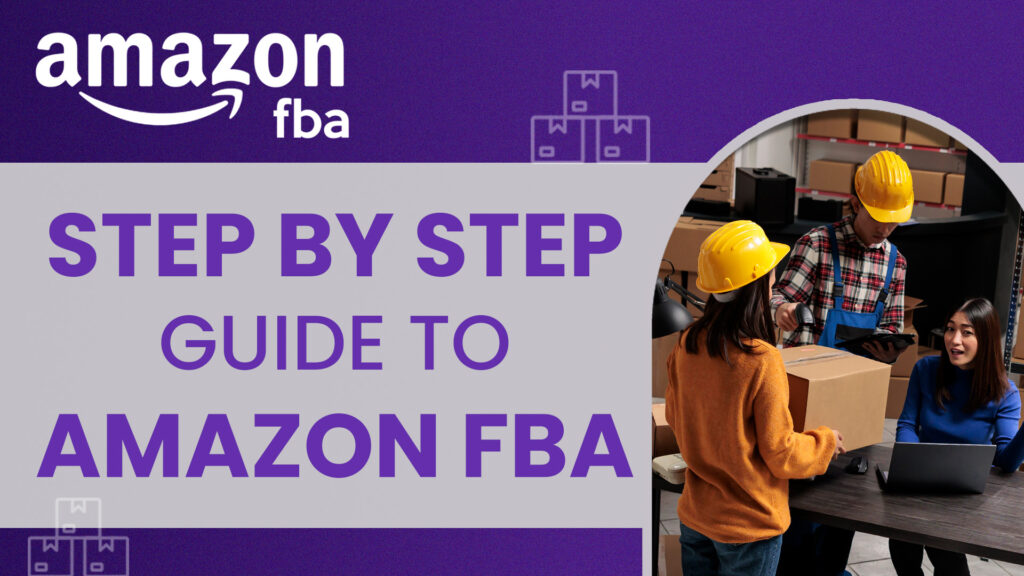
Maximizing Profits with Amazon FBA: A Step by Step Guide
Amazon FBA (Fulfillment by Amazon) is a powerful tool that allows sellers to scale their businesses by leveraging Amazon’s vast logistics network. However, simply listing products on Amazon isn’t enough to guarantee success. To truly maximize profits with Amazon FBA, sellers need a strategic approach. This stepbystep guide will walk you through the essential tactics for optimizing your Amazon FBA business.
Step 1: Product Research and Selection
Identify HighDemand, LowCompetition Products: Use tools like Jungle Scout or Helium 10 to analyze market trends, demand, and competition. Look for products with high search volume but fewer sellers to reduce competition and increase profitability.
Evaluate Profit Margins: Ensure your chosen product has a healthy profit margin after accounting for Amazon fees, shipping, and other costs. Aim for at least a 30% profit margin to ensure sustainable growth.
Step 2: Sourcing Products
Find Reliable Suppliers: Use platforms like Alibaba or Global Sources to connect with manufacturers. Vet suppliers carefully to ensure product quality and consistency.
Negotiate Pricing and Terms: Don’t settle for the first price offered. Negotiating with suppliers can significantly impact your profit margins. Also, discuss terms such as minimum order quantities and shipping times.
Step 3: Listing Optimization
Create Compelling Product Listings: Your product title, bullet points, and description should be clear, keywordoptimized, and persuasive. Focus on the product’s benefits and features to attract customers.
HighQuality Images: Use professional images that showcase the product from multiple angles. Images should be clear, welllit, and highlight key features.
Leverage A+ Content: If you’re eligible, use Amazon’s A+ Content feature to create enhanced product descriptions with additional images, comparison charts, and detailed information. This can boost conversion rates.
Step 4: Pricing Strategy
Competitive Pricing: Regularly monitor competitors’ prices and adjust yours to remain competitive. However, avoid a race to the bottom; instead, focus on offering value.
Dynamic Pricing Tools: Consider using automated pricing tools to adjust prices based on competition, demand, and other factors. This can help maintain optimal pricing without manual intervention.
Step 5: Inventory Management
Monitor Inventory Levels: Avoid stockouts, which can negatively impact your ranking and sales. Use tools to track inventory levels and set reorder alerts.
Optimize Storage Fees: Amazon charges storage fees based on the size and duration of your inventory. Regularly review your inventory to minimize longterm storage fees by running promotions or removing slowmoving items.
Step 6: Marketing and Advertising
Amazon PPC (PayPerClick) Advertising: Use Amazon’s advertising platform to increase product visibility. Start with automatic campaigns to gather data, then move to manual campaigns with targeted keywords.
Utilize Promotions and Discounts: Offer limitedtime discounts, coupons, or lightning deals to boost sales and improve rankings.
Leverage Social Media and Influencers: Drive external traffic to your Amazon listings through social media marketing and collaborations with influencers in your niche.
Step 7: Customer Service and Reviews
Encourage Positive Reviews: Reach out to customers postpurchase to request feedback. Positive reviews improve your product’s credibility and ranking on Amazon.
Respond to Customer Inquiries Promptly: Good customer service can lead to repeat business and positive reviews. Ensure all customer queries and issues are addressed quickly and professionally.
Step 8: Scaling Your Business
Expand Your Product Line: Once you’ve established a successful product, consider adding complementary products to your line. This can help increase your brand’s visibility and customer base.
Optimize and Outsource: As your business grows, consider outsourcing tasks such as customer service, inventory management, and marketing to free up time for strategic planning.
Diversify Sales Channels: While Amazon FBA is a powerful platform, consider expanding to other sales channels such as your own website, other online marketplaces, or even brickandmortar stores.
Conclusion
Maximizing profits with Amazon FBA requires a wellthoughtout strategy and continuous optimization. By following these steps, you can position your business for longterm success on Amazon. Remember, the key is to stay adaptable, keep learning, and always prioritize the customer experience.

